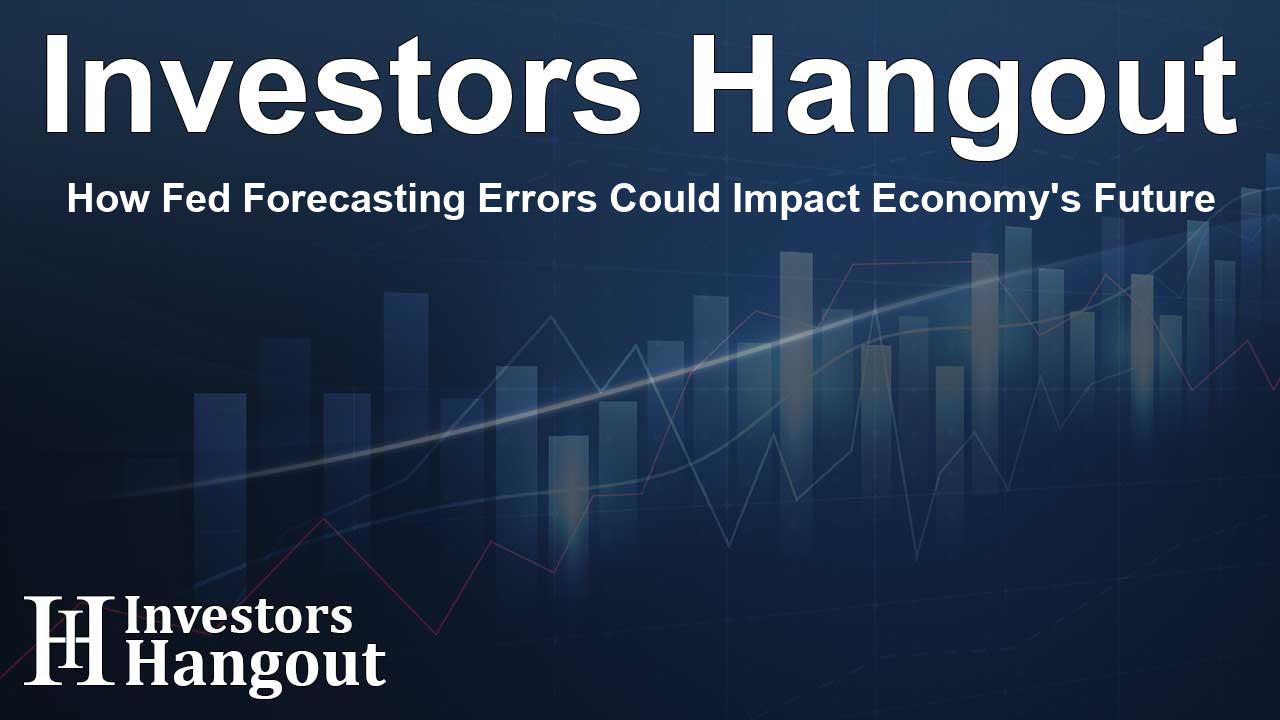How Fed Forecasting Errors Could Impact Economy's Future

Understanding the Federal Reserve's Forecasting Challenges
The Federal Reserve’s capability to forecast economic conditions has seen significant scrutiny. Historical trends indicate that the Fed often reacts after missing key economic signals, leading to delayed policy changes. In its recent FOMC meeting, the Fed highlighted a pause in its interest rate-cutting cycle, emphasizing the current economic environment's complexities.
During this meeting, the FOMC maintained the federal funds rate between 4.25% and 4.5%. This decision marks a significant shift, as it halted a series of cuts that began in September when the Fed initiated its first rate adjustment since March 2020. The announcement pointed out that unemployment remains steady, while inflation continues at elevated levels, reflecting ongoing economic pressures.
Evaluating Economic Mandates and Their Importance
To understand the Fed’s actions further, it is essential to reflect on its two primary mandates: full employment and price stability. These objectives are vital for sustaining a healthy economy and financial system. Full employment and stable inflation typically foster robust economic activity, which in turn enhances credit availability and lowers default risks, contributing to overall economic health.
Despite these goals, the Fed has faced difficulties accurately forecasting future growth. Errors in predictions often lead to significant economic consequences, especially during crises when forecasts drift far from reality. This gap amplifies the risks associated with policy responses and could destabilize the economy.
Unexpected Factors Shaping the Economic Landscape
One of the major hurdles the Fed encounters is the unpredictability of external events impacting consumer activity. With consumption accounting for nearly 70% of the U.S. economy, these unexpected disruptions can have profound implications. Interestingly, while household debt has surged since 2000, it has not corresponded with increased economic activity, suggesting that households are leveraging more debt merely to maintain their current lifestyle, rather than to enhance it.
This scenario places additional pressure on the Fed, which relies on consumer confidence to stimulate economic activity. The hope is for higher asset prices to provoke increased spending; however, paradoxically, the bottom 90% of earners have seen little improvement in their share of economic wealth. This has led to a restrained spending pattern even in the face of escalating asset prices.
Consequences of Misguided Forecasting
The Fed's persistent forecasting errors can lead to misguided policies, particularly regarding employment, which is critical for stimulating economic growth. Recent analyses have pointed to underlying weaknesses in worker demand, despite seemingly favorable headline figures.
Employment acts as the backbone of a consumption-driven economy. The relationship between employment levels, consumer spending, and corporate earnings cannot be overlooked. As past examples suggest, misjudging employment data can lead to delayed monetary policy adjustments, exacerbating economic pain.
Unraveling Current Employment Trends
Currently, the prevailing view concerning employment strength may be overly optimistic. Data shows that job gains primarily consist of part-time roles, while hiring rates have significantly dropped. Rising continuing jobless claims reflect a potential downward trend in the labor market, signaling that consumer confidence might soon falter, leading to reduced spending.
The Federal Reserve must navigate these intricate dynamics carefully. A significant reduction in full-time employment can correlate with reduced consumer spending and slower economic growth. Therefore, any revision to employment data could paint a bleaker picture than the Fed anticipates, complicating its policy decisions.
The Importance of Accurate Assessments
The tendency to lean on past data when making predictions increases the likelihood of policy missteps, which can influence markets, growth, and consumer sentiment. Despite favorable labor market reports, concerns over job security and consumer expectations indicate underlying economic distress.
For the Fed, higher borrowing costs complicate matters. As wage growth stagnates, consumers lean more on credit to sustain their lifestyles. If the Fed doesn’t respond to weakening consumer activity, it could face greater inflation declines than projected, adding to economic instability risks.
The implications of these forecasting errors extend beyond just employment metrics; they can result in increased market volatility and hinder business investment decisions. As history often shows, the Federal Reserve may act too late to prevent economic deterioration, creating a precarious situation for financial markets.
While the Fed’s decision to hold off on further rate cuts might seem prudent based on current conditions, future data revisions may reveal a scenario far worse than expected. Thus, it is critical for the Fed to refine its forecasting abilities to better navigate the ever-evolving economic landscape.
Frequently Asked Questions
Why does the Federal Reserve struggle with forecasting?
The Federal Reserve often struggles with forecasting due to unexpected economic events and complex dynamics within the economy that can change rapidly, making predictions less reliable.
What are the two main mandates of the Federal Reserve?
The two main mandates are to maintain full employment and ensure price stability, both essential for a healthy economy.
How do forecasting errors affect the economy?
Forecasting errors can lead to delayed policy responses, resulting in increased market volatility, disrupted business investments, and exacerbated economic downturns.
What role does consumer confidence play in the economy?
Consumer confidence drives spending, which is crucial for economic growth. If consumers feel uncertain about the economy, they may reduce their spending and increase savings.
What are the implications of high household debt?
High household debt can suppress economic growth as consumers funnel funds into debt servicing rather than spending, ultimately affecting overall economic activity.
About The Author
Contact Ryan Hughes privately here. Or send an email with ATTN: Ryan Hughes as the subject to contact@investorshangout.com.
About Investors Hangout
Investors Hangout is a leading online stock forum for financial discussion and learning, offering a wide range of free tools and resources. It draws in traders of all levels, who exchange market knowledge, investigate trading tactics, and keep an eye on industry developments in real time. Featuring financial articles, stock message boards, quotes, charts, company profiles, and live news updates. Through cooperative learning and a wealth of informational resources, it helps users from novices creating their first portfolios to experts honing their techniques. Join Investors Hangout today: https://investorshangout.com/
The content of this article is based on factual, publicly available information and does not represent legal, financial, or investment advice. Investors Hangout does not offer financial advice, and the author is not a licensed financial advisor. Consult a qualified advisor before making any financial or investment decisions based on this article. This article should not be considered advice to purchase, sell, or hold any securities or other investments. If any of the material provided here is inaccurate, please contact us for corrections.
